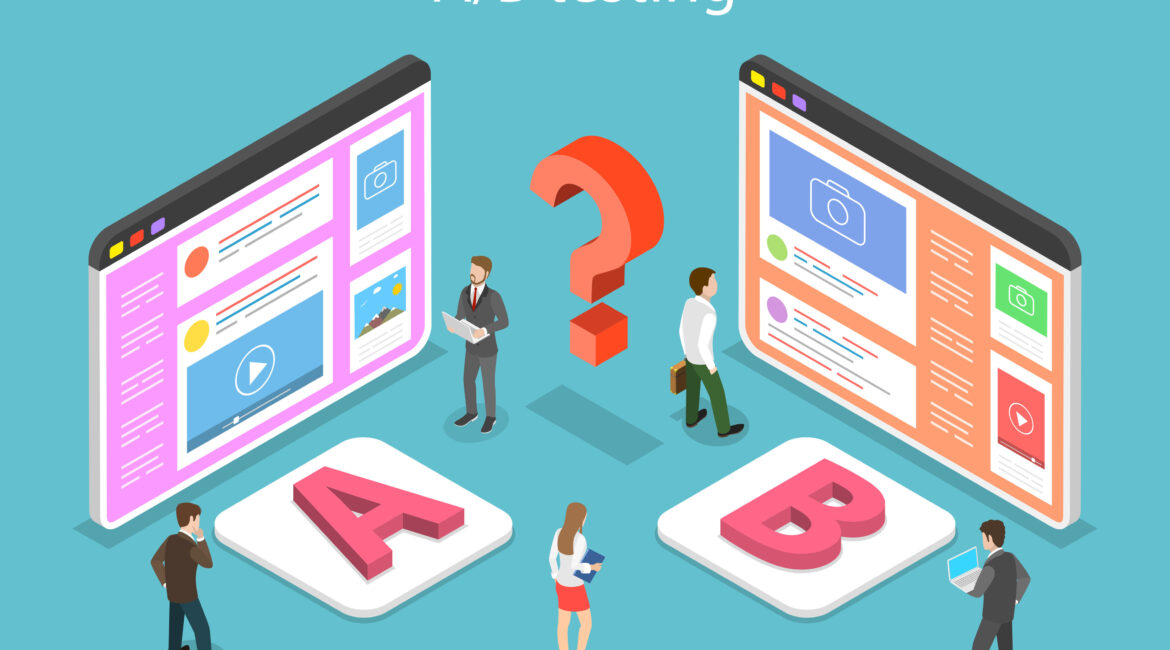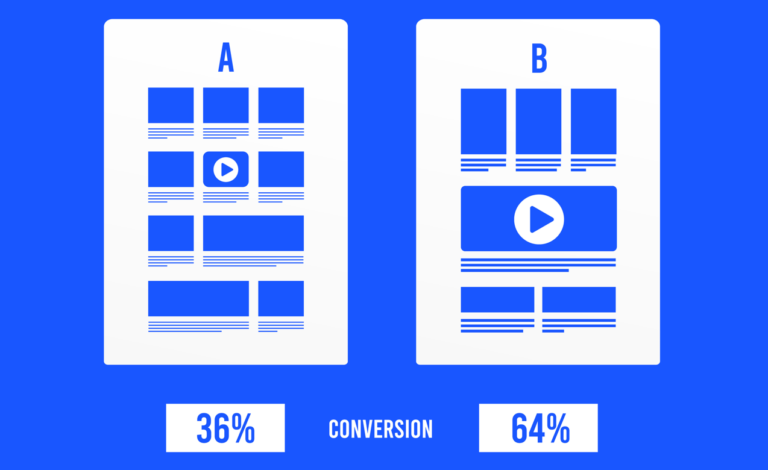Unlocking Success: The Power of A/B Testing in Digital Marketing

In the ever-evolving landscape of digital marketing, staying ahead of the competition requires strategic decision-making backed by data-driven insights.
One such powerful tool in the marketer’s arsenal is A/B testing, a method of data collection that allows businesses to experiment with variations in their digital assets to determine which performs better.
From email campaigns to website design, A/B testing enables marketers to optimize their efforts and achieve greater success in reaching their target audience.
Today, we dive into the details and strengths of A/B testing in the digital marketing field, sharing examples of this strategic method of data collection, the benefits of implementation, and ways you can use this same tool in your own marketing ventures.
What is A/B Testing?
A/B testing, also known as split testing, is a controlled experiment where two or more versions (A and B) of a digital asset are compared to identify which one performs better in terms of predefined key performance indicators (KPIs).
By dividing the audience randomly into different groups and exposing each group to a different version, marketers can analyze the data and make informed decisions about which elements resonate most effectively with their audience.
Email Marketing: Subject Lines and Content
A common application of A/B testing in email marketing involves testing different subject lines and email content to determine which combination leads to higher open rates, click-through rates, and conversions.
For instance, an e-commerce company might test two different subject lines to see if a personalized approach (Subject A: “Exclusive Offer Just for You!“) outperforms a sense of urgency (Subject B: “Limited-Time Flash Sale!“).
By analyzing the results, the company can refine future email campaigns for maximum impact.
Website Design: Call-to-Action (CTA) Buttons
A/B testing can be instrumental in optimizing website design for higher conversion rates.
Marketers often experiment with variations of call-to-action buttons, testing factors such as color, text, and placement.
For example, an online subscription service may compare a green CTA button (Version A) with a red one (Version B) to determine which color prompts more users to sign up.
Through iterative testing, the company can continuously refine the design for optimal user engagement.
Ad Campaigns: Ad Copy and Imagery
Digital advertising campaigns can benefit significantly from A/B testing, especially in terms of ad copy and imagery.
For instance, a travel agency might experiment with two different ad headlines (“Explore Paradise with Us” vs. “Unwind in Tropical Bliss“) and images (beach scene vs. adventure activity).
By tracking metrics such as click-through rates and conversion rates, the agency can identify which combination resonates best with its target audience, subsequently optimizing future ad creative.
Social Media: Posting Times and Content Types
A/B testing is also valuable in social media marketing, particularly in determining the most effective posting times and content types.
A company might experiment with posting the same content at different times of the day (Version A: morning, Version B: evening) or test different types of content (infographics vs. video).
The insights gained from such experiments can guide the social media strategy for improved engagement and audience reach.
Using A/B Testing in Your Campaign
Implementing A/B testing in a digital marketing campaign involves a systematic approach to experimentation and data analysis.
Here’s a step-by-step guide on how a business can effectively implement A/B testing in its digital marketing efforts:
1.Define Clear Objectives:
Clearly outline the goals and key performance indicators (KPIs) that you want to improve through A/B testing. Whether it’s increasing click-through rates, improving conversion rates, or enhancing user engagement, having well-defined objectives is crucial for a successful A/B testing strategy.
2. Identify Variables to Test:
Determine the specific elements or variables you want to test. These could include email subject lines, call-to-action buttons, website headlines, ad copy, images, posting times, or any other component relevant to your campaign goals.
3. Create Hypotheses:
Develop hypotheses based on your understanding of your target audience and industry trends. These hypotheses will guide your testing strategy and help you make informed predictions about which variations might perform better.
4. Divide Your Audience:
Randomly split your audience into different groups, with each group exposed to a different variation of the element you are testing. Ensure that your sample sizes are statistically significant to draw reliable conclusions.
5. Implement Variations:
Create the different versions (A and B) of the element you are testing. For example, if testing email subject lines, create two versions with distinct subject lines. If testing website design, create two versions with different layouts or color schemes.
6. Run the Test:
Launch your A/B test and ensure that the variations are evenly distributed among the designated audience groups. Be mindful of external factors that may influence results and run the test for a sufficient duration to gather an adequate amount of data.
7. Monitor and Analyze Results:
Track relevant metrics and analyze the performance of each variation. Use analytics tools to measure key indicators such as click-through rates, conversion rates, engagement, and other predetermined KPIs. Pay attention to statistical significance to ensure the reliability of your results.
8. Draw Conclusions:
Based on the results of your A/B test, draw conclusions about which variation performed better. Determine whether the observed differences are statistically significant and align with your initial hypotheses.
9. Implement Changes:
Apply the insights gained from your A/B test to optimize your digital marketing strategy. Implement the changes that proved to be more effective in achieving your campaign objectives.
10. Iterate and Repeat:
A/B testing is an iterative process. Use the insights from each test to inform subsequent experiments. Continuously refine and optimize your digital assets based on the feedback and performance data obtained from previous tests.
By following – and documenting – these steps, businesses can systematically incorporate A/B testing into their digital marketing campaigns, enabling them to make data-driven decisions that lead to continuous improvement and enhanced campaign performance.
The Wrap Up
A/B testing is a powerful tool that empowers digital marketers to make informed decisions, refine strategies, and enhance overall campaign performance.
By systematically testing variations in elements such as email subject lines, website design, ad creatives, and social media content, businesses can optimize their digital marketing efforts for greater success.
As the digital landscape continues to evolve, A/B testing remains a crucial practice for staying agile, responsive, and effective in reaching and engaging target audiences.
P.S. If you’d like help getting your A/B testing up and running or just need some help with your digital marketing campaign, in general, then Rain Digital wants to hear from you!
Our team of skilled digital marketing experts have the education and expertise to help your business grow into the success story you’ve always known it could be.






